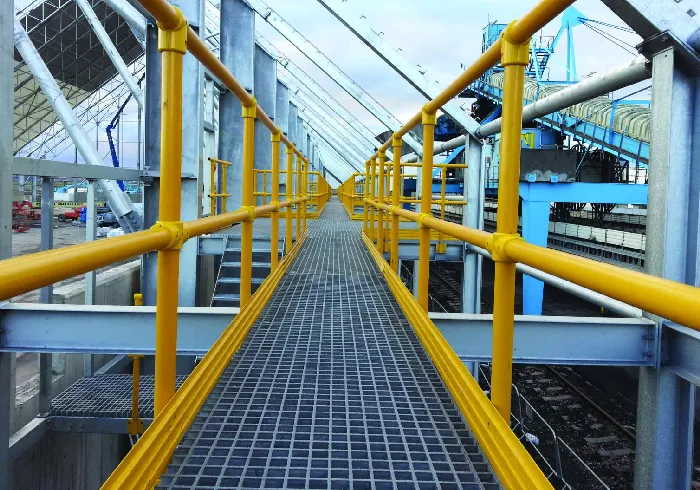loading...
- No. 9, Xingyuan South Street, Dongwaihuan Road, Zaoqiang County, Hengshui, Hebei, China
- admin@zjcomposites.com
- +86 15097380338
- Welcome to visit our website!
glass fiber reinforced polymer gfrp rebar
Glass Fiber Reinforced Polymer (GFRP) Rebar A Modern Alternative in Construction
Glass Fiber Reinforced Polymer (GFRP) rebar is emerging as a revolutionary material in the field of construction and civil engineering
. Unlike traditional steel reinforcement bars, GFRP rebars are made of glass fibers embedded in a polymer matrix, offering several distinct advantages that make them an attractive option for a wide range of applications.One of the most significant benefits of GFRP rebar is its corrosion resistance. Steel rebar is prone to rust and deterioration when exposed to moisture, harsh chemicals, and saline environments, which can compromise the structural integrity of concrete structures. In contrast, GFRP rebar is non-corrosive, making it particularly suitable for use in coastal regions, bridges, and structures exposed to de-icing salts. This resistance to corrosion not only extends the lifespan of the structures but also reduces maintenance costs over time.
Another advantage of GFRP rebar is its lightweight nature. GFRP rebars are significantly lighter than steel, making them easier to handle, transport, and install. This can lead to reduced labor costs and increased efficiency on construction sites. The lightweight characteristic also contributes to a decrease in the overall weight of concrete structures, which can be particularly beneficial in seismic zones where reduced weight can improve stability during earthquakes.
glass fiber reinforced polymer gfrp rebar

In terms of strength, GFRP rebars exhibit impressive tensile strength and can withstand significant loads, making them suitable for a variety of structural applications. They also have a high fatigue resistance, which is crucial for structures subjected to repetitive loads, such as bridges and highways. Furthermore, GFRP rebar is non-magnetic and non-conductive, making it an ideal choice for applications in environments where magnetic interference could be problematic, such as in MRI facilities or near sensitive electronic equipment.
The installation of GFRP rebar can also be more efficient due to its compatibility with existing construction practices. It can be easily cut and shaped using standard tools, allowing engineers and construction workers to incorporate it seamlessly into their projects. Additionally, GFRP rebars are resistant to chemical attacks, adding to their utility in industrial applications where exposure to aggressive substances is a concern.
Despite the various advantages offered by GFRP rebar, it is essential to consider its limitations. The initial cost of GFRP can be higher than that of traditional steel rebar. However, the long-term savings in maintenance and repairs often offset this initial investment. Moreover, the development of standards and codes for GFRP usage in construction is still underway, which can impact its wider adoption in the industry.
In conclusion, Glass Fiber Reinforced Polymer rebar represents an innovative solution in the construction industry, offering enhanced durability, lightweight properties, and resistance to corrosion and environmental factors. As technology advances and more projects integrate GFRP rebar into their designs, it is poised to become a cornerstone material for sustainable and resilient infrastructure development.
-
Transform Your Spaces with FRP Grating SolutionsNewsNov.04,2024
-
The Versatility and Strength of FRP RodsNewsNov.04,2024
-
The Excellence of Fiberglass Water TanksNewsNov.04,2024
-
The Benefits of FRP Grating for Your ProjectsNewsNov.04,2024
-
Elevate Your Efficiency with FRP Pressure VesselsNewsNov.04,2024
-
Welcome to the World of FRP Pressure VesselsNewsOct.12,2024
-
Unveiling the Future of Filtration: Why FRP Filter Vessels are a Game ChangerNewsOct.12,2024
